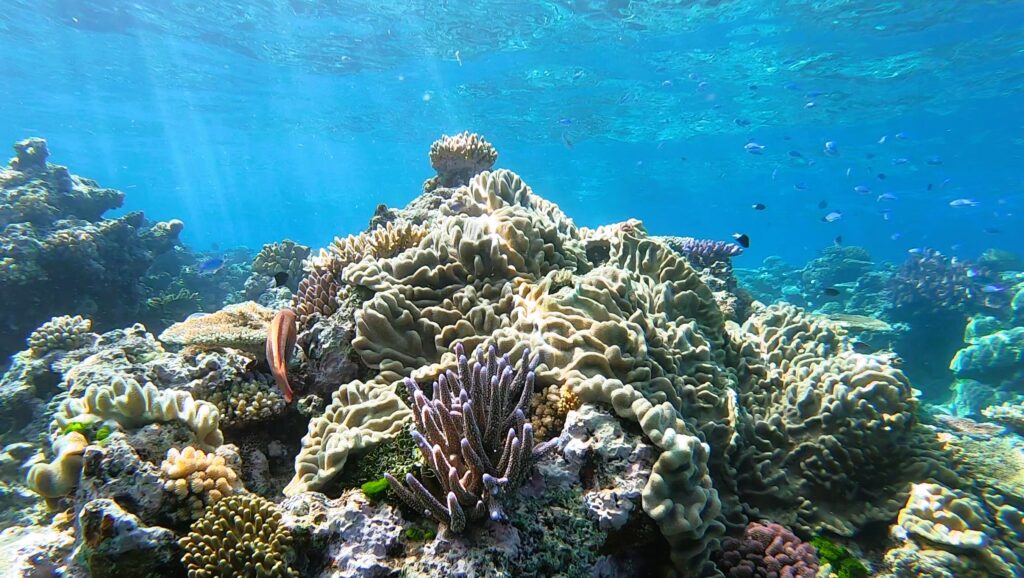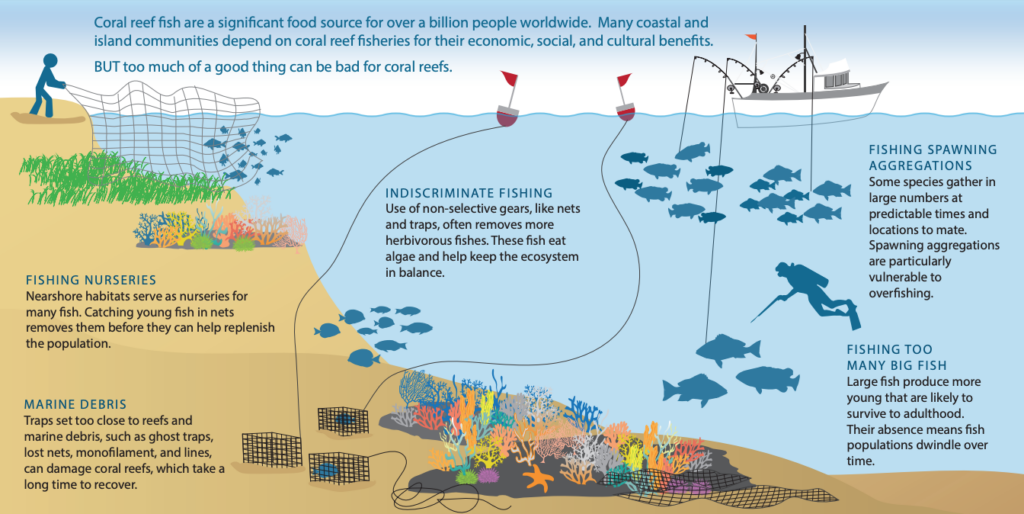Coral reefs are often referred to as the “rainforests of the sea”. They are underwater formations made up of colonies of tiny marine organisms called coral polyps. These polyps have a remarkable ability to build calcium carbonate exoskeletons, forming intricate structures that provide a habitat for a vast array of marine species. Over time, as new generations of coral polyps settle on top of the old ones, reefs grow and expand, creating diverse and interconnected ecosystems.

Coral reefs are renowned for their incredible biodiversity. Despite covering less than 1% of the Earth’s surface, they support approximately 25% of all marine life. These ecosystems are home to a staggering variety of fish, molluscs, crustaceans, and other marine organisms. They provide critical breeding grounds, nurseries, and shelter for countless species, playing an essential role in maintaining the health and balance of our oceans.
Types of Coral Reefs:
Coral reefs come in different shapes and sizes, each with its own unique characteristics. The three main types are:
- Fringing Reefs: These reefs form along the coastline and are directly attached to the shoreline or a nearby landmass.
- Barrier Reefs: Barrier reefs are located farther from the shore, separated by a lagoon. They often run parallel to coastlines, forming a barrier between the open ocean and the mainland.
- Atolls: Atolls are circular or horseshoe-shaped reefs that encircle a lagoon. They are usually found in the middle of the ocean, formed around the remnants of submerged volcanic islands.
The Value of Coral Reefs:
Coral reefs provide invaluable benefits to both marine life and humans. They protect coastal areas from erosion, storms, and tsunamis by acting as natural barriers. Reefs also play a significant role in carbon and nitrogen fixation, helping to regulate the Earth’s climate. They are a vital source of food and income for millions of people worldwide, particularly in developing countries heavily reliant on fisheries and tourism.
Threats:
Unfortunately, coral reefs face numerous threats that put their very existence at risk. Climate change is one of the most significant challenges, as rising sea temperatures and ocean acidification disrupt the delicate symbiotic relationship between coral polyps and the algae that provide them with essential nutrients. Other human-induced factors such as overfishing, destructive fishing practices, pollution, and coastal development further exacerbate the vulnerability of these ecosystems.

Conservation and the Way Forward:
Protecting and preserving coral reefs is crucial for the health of our oceans and the future of countless species, including our own. Immediate action is required to address the root causes of coral reef decline. This includes reducing greenhouse gas emissions, establishing marine protected areas, promoting sustainable fishing practices, and educating communities about the importance of conservation.
Furthermore, scientific research, coral reef restoration initiatives, and partnerships between governments, organizations, and local communities are essential to restoring damaged reefs and building resilience against future threats.
The Great Barrier Reef is the world’s largest coral reef system, stretching over 2,300 kilometres off the coast of Australia, is renowned for its unparalleled biodiversity.
Coral reefs are truly one of nature’s most awe-inspiring creations. Their intricate beauty and vital role in supporting marine life cannot be overstated. By understanding the significance of these environments and taking action to protect them, we can ensure these underwater wonders continue to thrive for generations.

